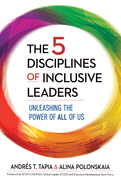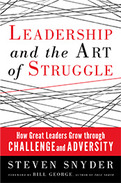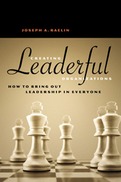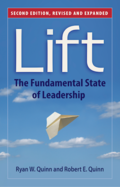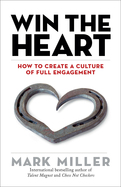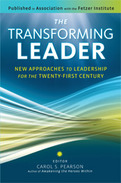According to the journal Human Resource Management, companies are spending over $8 billion a year on diversity programs. Yet today, the senior leadership teams at Fortune 500 companies are far from mirroring the diversity of its workforce and its customers. Andrés Tapia and Alina Polonskaia, senior leaders at Korn Ferry, argue that to build sustainable diversity and inclusion, organizations need to have inclusive leaders at all levels.
In this book, Tapia and Polonskaia draw on Korn Ferry's massive database of 3 million leadership assessments to reveal the essential qualities of inclusive leaders. They discuss the personality traits these leaders share and detail how to develop what they call the five disciplines of inclusive leadership: building interpersonal trust, integrating diverse perspectives, optimizing talent, applying an adaptive mindset, and achieving transformation.
Tapia and Polonskaia also outline the competencies behind each discipline, describe individual and organizational exemplars of inclusive leadership, and show how the five disciplines enable leaders to unleash the power of all people and to build both structurally and behaviorally inclusive organizations. This book will help leaders foster the skills to deal with today's complex challenges and create a more inclusive, sustainable, and prosperous future for all of us.
This book shatters leadership myths to reveal a new understanding of how exceptional leaders grow from adversity.
- Offers proven strategies and tactics to help guide leaders through difficult or challenging situations
- Features powerful first-person stories from leaders who have mastered the art of struggle
- Written by an experienced leader and executive coach who worked directly with Bill Gates at Microsoft in its early years
- Read the press release here; for media review copies contact [email protected]m
Leadership and the Art of Struggle shatters leadership myths to reveal a new understanding of how exceptional leaders grow from adversity. The image that effective leaders guide their organizations on perpetually smooth journeys quite simply defies reality. Leadership is often a struggle, and yet strong taboos keep us from talking openly and honestly about our struggles for fear of looking weak and seeming to lack confidence.
Exceptional leaders intuitively understand the paradox. They know it's precisely struggle that unlocks the potential for the greatest growth. Instead of denying struggle, these leaders embrace struggle as an opportunity for learning, as an art to be mastered.
Leadership and the Art of Struggle paints a realistic portrait of how great leaders navigate intense challenges for personal growth and organizational success. Through 150 stories of leadership struggle drawn from nearly 100 interviews, as well as from his experiences as an early executive at Microsoft, a CEO of a public company, and an executive coach, Steven Snyder derives mastery strategies for welcoming struggle as an integral part of your leadership journey. To help you implement each of these strategies, he offers a host of unique tools and specific, hands-on practices. You'll learn how to cultivate the best mindset for confronting challenges, explore multiple tactics for dealing with struggle, and keep your energy high so you can continue to learn and grow.
Leadership and the Art of Struggle begins a new conversation about leadership. The very striving to make important human values real and effective is core to the practice of leadership. By mastering the art of struggle, leaders meet life's challenges and adversities, focusing their energies on what matters most.
- Offers proven strategies and tactics to help guide leaders through difficult or challenging situations
- Features powerful first-person stories from leaders who have mastered the art of struggle
- Written by an experienced leader and executive coach who worked directly with Bill Gates at Microsoft in its early years
- Read the press release here; for media review copies contact [email protected]m
Leadership and the Art of Struggle shatters leadership myths to reveal a new understanding of how exceptional leaders grow from adversity. The image that effective leaders guide their organizations on perpetually smooth journeys quite simply defies reality. Leadership is often a struggle, and yet strong taboos keep us from talking openly and honestly about our struggles for fear of looking weak and seeming to lack confidence.
Exceptional leaders intuitively understand the paradox. They know its precisely struggle that unlocks the potential for the greatest growth. Instead of denying struggle, these leaders embrace struggle as an opportunity for learning, as an art to be mastered.
Leadership and the Art of Struggle paints a realistic portrait of how great leaders navigate intense challenges for personal growth and organizational success. Through 150 stories of leadership struggle drawn from nearly 100 interviews, as well as from his experiences as an early executive at Microsoft, a CEO of a public company, and an executive coach, Steven Snyder derives mastery strategies for welcoming struggle as an integral part of your leadership journey. To help you implement each of these strategies, he offers a host of unique tools and specific, hands-on practices. Youll learn how to cultivate the best mindset for confronting challenges, explore multiple tactics for dealing with struggle, and keep your energy high so you can continue to learn and grow.
Leadership and the Art of Struggle begins a new conversation about leadership. The very striving to make important human values real and effective is core to the practice of leadership. By mastering the art of struggle, leaders meet lifes challenges and adversities, focusing their energies on what matters most.
It is not merely consultative, with leaders graciously allowing followers to participate in leadership, nor is it a stewardship approach in which the leader occasionally steps aside to allow others to take over temporarily. It is a revolutionary new approach that transforms leadership from an individual property to a collective responsibility. Raelin details how "leaderful" practice can accomplish the critical processes of leadership more effectively than any existing approach. And using actual examples from leading-edge organizations, he offers practical guidance for assessing your own and others' leaderful predisposition, preparing for leaderful practice, distributing leadership roles, and dealing with resistance to change.
- Outlines a revolutionary new approach to leadership that is better able to respond to organizational turbulence, meet customer expectations, maintain employee commitment, and unleash creativity
- Shows why leadership must be concurrent-with two or more people leading simultaneously-if organizations are to flourish
- Includes examples of this new approach in action from some of today's most progressive organizations -- the Peace Corps, Orpheus Chamber Orchestra, Virgin, Harley-Davidson, and The New Yorker.
2015
Harness the Science of Positive Influence
Just as the Wright Brothers combined science and practice to finally realize the dream of flight, Ryan and Robert Quinn combine research and personal experience to demonstrate how to reach a psychological state that lifts us and those around us to greater heights of achievement, integrity, openness, and empathy. The updated edition of this award-winning book—honored by Utah State University's Huntsman School of Business, Benedictine University, and the LeadershipNow web site --includes two new chapters, one describing a learning process and social media platform the Quinns created to help people experience lift and the other sharing new insights into tapping into human potential.
2019
In the fourth book in Miller's High Performance Series, CEO Blake Brown sets out to discover how to create the kind of workplace where everyone feels excited to come to work, passionate about what he or she brings to the company, and energized at the end of the day. It's a journey that takes him literally all over the world—from Italy to Greece to Green Bay and more. What he discovers from the pages of history is as relevant as the evening news.
Engagement unleashes untapped potential buried deep within the hearts of your people. An engaged workforce is more creative, more driven, and more enthusiastic about reaching company goals. If you put the lessons in this book to work, your people will never look at work, or their leaders, the same way again.
Outlines a new leadership approach tailored to the realities of the 21st Century.
- Outlines a new leadership approach tailored to the realities of the twenty-first century
- Features chapters by such leading authors as Matthew Fox, Diana Whitney, and Alan Briskin
- Edited and annotated by the author of the bestselling The Hero Within
The traditional model of the heroic leader single-handedly piloting the organization was always something of a myth, but it is especially unrealistic now. We live in a complex, fast-evolving, highly connected world. There is simply too much for a single person to keep track of or to address successfully. Leaders today must not only optimize all their own faculties-mind, body, and spirit-they must harvest the full capacities of those around them.
To discover what leadership models are working now, the prestigious Fetzer Institute, along with the University of Maryland's School of Public Policy, and the International Leadership Association, brought together an impressive, interdisciplinary group of scholars and practitioners. The group drew on psychology, sociology, neuroscience, organizational change theory, myths and wisdom traditions, social networking theory, and the actual experiences of successful leaders to discover how leaders today achieve transformational results.
The first part of the book offers an overview of what transformational leadership is, how it works, and how it is evolving. The second part shows readers how to increase cognitive complexity, link up their conscious and unconscious minds, and lead in ways that connect mind, heart, and spirit. The third part describes ways of leading groups to harvest collective wisdom and promote coordinated performance in the service of transformational ends. The conclusion explores how transformational communication can anchor new learnings so that they become habitual.
Overall, The Transforming Leader reframes the challenge of leading in today's interdependent, unpredictable world. Its message is that if we update our thinking, enhance the quality of our being, deepen our sense of relatedness with the ecology of our natural and social worlds, and practice transformational communication, things no longer have to be so hard.
-
Outlines a new leadership approach tailored to the realities of the twenty-first century
-
Features chapters by such leading authors as Matthew Fox, Diana Whitney, and Alan Briskin
-
Edited and annotated by the author of the bestselling The Hero Within
The traditional model of the heroic leader single-handedly piloting the organization was always something of a myth, but it is especially unrealistic now. We live in a complex, fast-evolving, highly connected world. There is simply too much for a single person to keep track of or to address successfully. Leaders today must not only optimize all their own facultiesmind, body, and spiritthey must harvest the full capacities of those around them.
To discover what leadership models are working now, the prestigious Fetzer Institute, along with the University of Marylands School of Public Policy, and the International Leadership Association, brought together an impressive, interdisciplinary group of scholars and practitioners. The group drew on psychology, sociology, neuroscience, organizational change theory, myths and wisdom traditions, social networking theory, and the actual experiences of successful leaders to discover how leaders today achieve transformational results.
The first part of the book offers an overview of what transformational leadership is, how it works, and how it is evolving. The second part shows readers how to increase cognitive complexity, link up their conscious and unconscious minds, and lead in ways that connect mind, heart, and spirit. The third part describes ways of leading groups to harvest collective wisdom and promote coordinated performance in the service of transformational ends. The conclusion explores how transformational communication can anchor new learnings so that they become habitual.
Overall, The Transforming Leader reframes the challenge of leading in todays interdependent, unpredictable world. Its message is that if we update our thinking, enhance the quality of our being, deepen our sense of relatedness with the ecology of our natural and social worlds, and practice transformational communication, things no longer have to be so hard.


